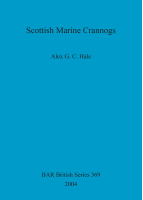Description
BOOK DESCRIPTIONScottish crannogs are situated in wetland lacustrine or marine environments. While the so called lake dwellings situated in freshwater environments have been the focus of considerable, and growing, attention, those sites located in marine environments,especially Scottish firths, remain the poor relation and, as yet, have not been the subject of detailed analysis. In some ways this is surprising given the potential importance of firths as prehistoric transport routes. Such sites along firths may have acted as nodal points in postulated networks of coastal transport, exchange and trade. The paucity of research may in part therefore be explained by the relative rarity of marine crannogs and the apparent difficulties of researching on sites in the intertidal zone. This book sets out to examine the archaeological potential and palaeoenvironmental significance of the remains of marine crannogs in Scotland. Three key areas of marine crannog research were identified form the framework of this volume. The first was to record main site distribution, location and environmental change. The second objective was to assess the position of marine crannogs within the contemporary landscape and to evaluate how they relate to other sites in their regions. This has the result of integrating these sites into the archaeological landscape so that evidence of their function, from structural and artefactual evidence, may contribute to the reconstruction of past societies. The third broad aim of this work was to ascertain whether reliable dating evidence might be acquired from marine crannogs. Evidence is produced that is used to place the sites into their contemporary landscapes and the chronological framework of past societies.











